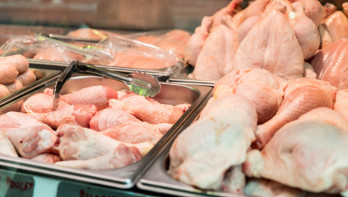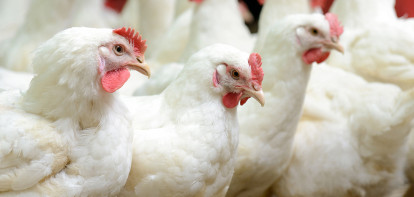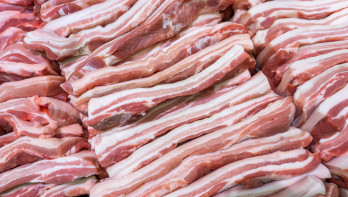Analysis Chicken & Poultry
Verdict could hurt Dutch poultry sector
The judge's ban on grabbing chickens by the legs while catching them has caused a lot of commotion in the poultry chain. There is a fear that costs will increase significantly as a result. Traders openly doubt whether they want to continue buying chicken from the Netherlands. Moreover, it is noticeable in the market that China is importing more and more poultry meat from Russia.
The Dutch broiler price remains stable. For the fourth consecutive week, the price stands at €1.13 per kilo.
Traders indicate that the market is still price-supportive. Sales remain relatively constant, and on the supply side of the market, developments are clearly favorable for the Northern European poultry market. The supply has been under pressure again for roughly a month. This is mainly due to relatively high Polish poultry prices. Depending on the region, the prices in the country range between 5.30 and 5.58 zloty. At the current exchange rates, that is a range of €1.23 to €1.30. Because the prices are too high for exports, little meat from the Eastern European market enters the Dutch market. As a result of the low supply, prices of fillets and thigh meat are on the rise. Meanwhile, prices of bone meat remain stable, as these are products that are mainly dependent on exports.
Concerns about ruling
Although the market is relatively relaxed, there are concerns about the ruling of the College of Appeal for Trade and Industry (CBb) that poultry should no longer be grabbed by the legs. Market insiders share fears with Nepluvi and indicate that other ways of catching are too time-consuming. The fear is that catching companies may not be able to find enough staff to catch the chickens if there is no new European law that legalizes the common method after the transition period from August 15. Therefore, they are considering shifting their purchases in the Netherlands and focusing on purchasing in the German and Belgian markets instead.
Tight world market
Prices on the world market are still high. The leading Brazilian quotation is back on the rise after a dip. In mid-May, the price of Brazilian broilers was 7.40 Brazilian Real (€1.28 per kilo). By the end of May, the price dropped to 7.29 real (€1.26). On June 6, the price rose again to 7.37 real (€1.28). However, the price differences in practice are smaller, as the real has lost value against the Euro. In mid-May, a real was worth over 18 euro cents. By now, the value of the real has dropped to just above 17 cents. In practice, this difference in exchange rates means that the price difference between both markets decreases by about 6 cents.
The tight world market provides opportunities for countries that can deliver large volumes. This includes Russia, which is exporting more and more poultry meat to China. In 2023, exports increased to 1.2 million tons. This made Russia the third-largest exporter to the Chinese market. A whopping 56% of the poultry meat that Russia exports to countries outside the former Eastern Bloc is destined for China. The increased Russian exports mainly came at the expense of American exports. Exports from the United States decreased by 29.6%. It is expected that exports will continue to rise.




